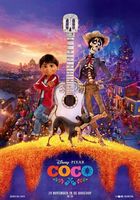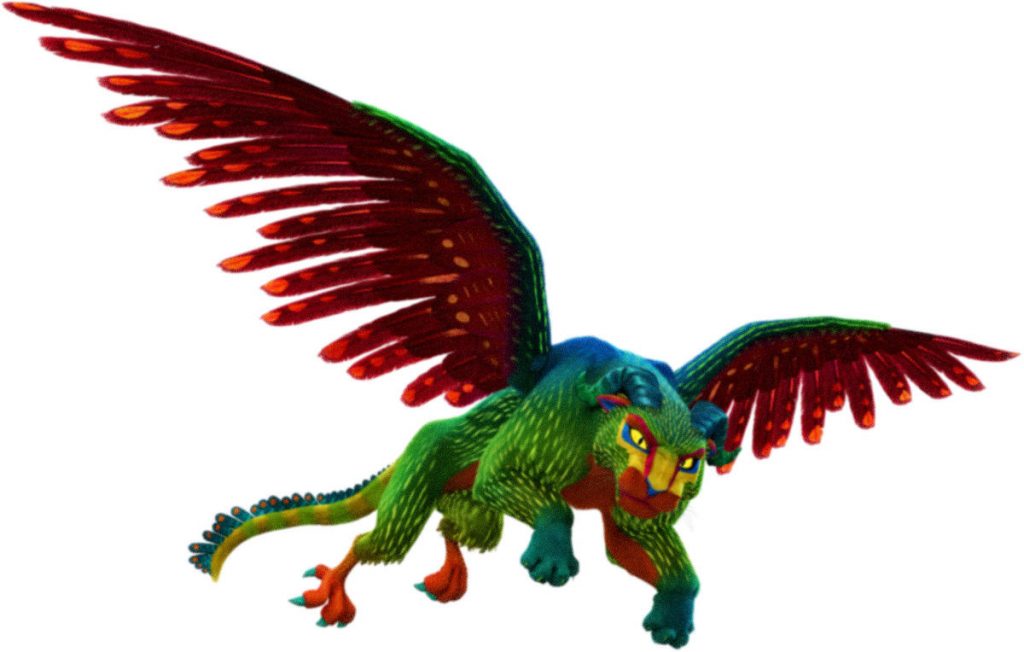
Helping Miguel Rivera navigate the Land of the Dead as he seeks to find his great-great-grandfather is Dante, the stray Xoloitzcuintli dog. However, when it is revealed that Dante is instead a “mythical” and “powerful” alebrije or spirit guide, this subsequently exposes a tension between his two identities. This scene in particular sees Miguel use the title of ‘alebrije’ for Dante in praise, whereas throughout the film ‘dog’ has been used as an insult or scolding. This establishes a hierarchy between the two species where alebrijes are considered of greater importance than the dog. Moreover, this is presented as a hierarchy that is established and defined by the human perception, one which brings in human conceptions of beauty and attractiveness to be judged against other species. When this scale of attractiveness is measured against Dante and his original dog appearance fails, his transformation into an alebrije becomes necessary in order to exist as a companion within the Disney-Pixar canon.
There is a hierarchy between alebrijes and dogs, that more value and acceptance is placed upon the alebreji form. This dichotomy is set from the beginning where ‘just a dumb dog’ is used as an insult. When the character of Frida Kahlo initially views Dante as this ‘spirt guide’ but quickly retracts this statement and instead changes to ‘maybe he is just a dog’ after Dante exhibits the initiate and natural dog behaviour of biting his leg. However, by this moment and as we head towards the climax of the film, Dante has now proven his productivity and usefulness as an animal companion by successfully leading Miguel to his biological grandfather. This thereby warrants and justifies the change in identifying Dante as a spirit animal, as it is only when has he proved himself that he is allowed to be truly recognised and take the appearance as this spirit guide. This comes at the cost of the substitution of ‘good dog’ with his newly acquired title when Miguel asks him ‘Who’s a good spirit guide?’, to which Dante is given no opportunity or time to challenge such when Miguel quickly answers his own question with ‘You are!’.However, this confirms the dichotomy between the two different species and identities of Dante, one which positions the alebreji with greater importance and reward than the ordinary dog.
It is important to recognise that it is only after Miguel accepts Dante to be this spirit guide, that Dante is allowed to transform, suggesting that Dante’s identity is dependent entirely upon the human perception of him. Thereby it is not Dante’s choice to take the identity and form of an alebrije, but one that is decided by the human gaze and placed upon him. Consequently there must be this change to Dante’s appearance in order to reflect and acknowledge the change in perception of him by Miguel and the audience. That in order to occupy this important and supernatural position, he must become something different, more aesthetic than his dog appearance previously. Pepita’s design demonstrates the significant value that appearances and beauty hold, as her inner characteristics and personality traits are directly reflected by her physical body. That she is quick, assertive and powerful and is therefore given her grand body, huge wings and intricate patterning. Dante on the other hand remains as a fool for ridicule and therefore is designed with ‘pathetic’ and ‘wasp like wings’ to reflect his clumsy and goofy personality.[i]The film stresses the importance of the physical appearances and what they subsequently symbolise, meaning this scene where Dante’s body drastically transforms and metaphorizes, must be of great significance.
Transformation serves to configure the character’s aesthetics in correlation to human perceptions and concepts of beauty. However, since the appearances of the characters are so heavily influenced by human perspectives, it can be also be suggested that there is a transfer of human ideals and hierocracies upon Dante. The transformation acts to strip Dante of his regarded ‘ugly’ physical characteristics; his hairless, wart covered, and murky brown-grey coloured skin is replaced by vibrant patterning and bright block coloured skin.[ii]In one perspective it could be considered that Dante is undergoing the ugly duckling cliché, often otherwise associated with the makeover transformation scene in young adult comedies. In undergoing this transformation, Dante becomes more similar to that to which we typically associate with the cinematic image of the dog. Therefore, it could be questioned as to whether this transformation was the result of a change human perception or was it always necessary in order for Dante to exist with the other animal companions in the Disney/Pixar canon. In comparison to Dug, the other dog character in the Pixar universe, after the transformation Dante becomes more similar to Dug as they are now both physically attractive and possess supernatural capabilities. Dante now conforms to the Hollywood definition and image of the ‘dog’, and thus in his transformation demonstrates the transference of human hierarchies of judgement onto other animal species.

[i][i]On The Set, Coco [Dante (Xoloitzcuintli or Xolo], interview, Youtube, 14 February 2018, <https://www.youtube.com/watch?v=kOV7uzrsp7o> [accessed 14/11/2018].
[ii]Coco [Dante (Xoloitzcuintli or Xolo]